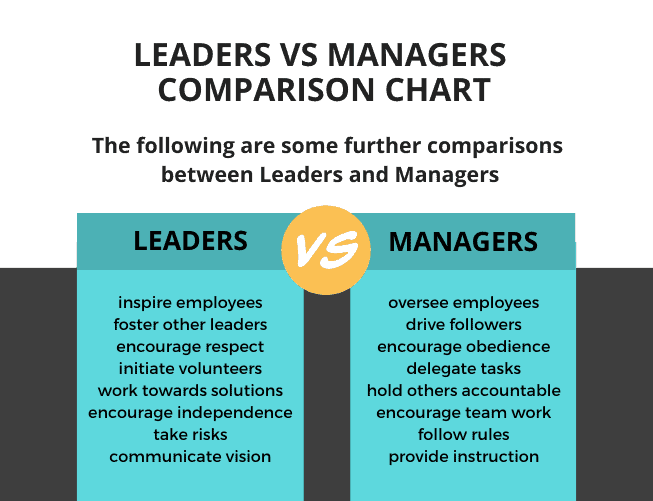Exploring the Differences Between Leadership and Management
The concepts of leadership roles and management roles encompass distinct qualities, responsibilities, and impacts on an organization’s culture and success. Understanding the differences between leadership and management is crucial for effective team building, organizational development, and personal career growth.
Defining the Core: Management versus Leadership
Managers focus on the tangible aspects of an organization’s success, such as process efficiency, resource allocation, and procedural adherence. They are the architects of the organization’s infrastructure, meticulously planning and organizing to ensure operational excellence. In contrast, leaders prioritize the intangible elements that drive progress and innovation. They are the catalysts for change, charged with inspiring and motivating their teams towards a shared vision. While a manager’s approach is structured and methodical, aiming to maintain order and consistency, a leader’s approach is dynamic and inspirational, seeking to cultivate an environment where new ideas flourish and employees are motivated to go beyond the status quo.
The Manager’s Domain: Stability, Control, and Execution
Managers are essential in establishing the framework within which teams operate, prioritizing stability, control, and the flawless execution of tasks. Their role involves setting clear goals, designing meticulous plans for achieving these goals, and closely monitoring the progress to ensure objectives are met efficiently. This domain thrives on a manager’s ability to solve problems decisively, make informed decisions, and meticulously manage resources to avoid waste and maximize productivity. By enforcing policies and overseeing the adherence to procedures, managers provide the necessary structure that underpins the functionality and efficiency of their teams. Their focus on the tangible outcomes of organizational activities ensures that operations run smoothly, reinforcing the foundation upon which innovation and growth can be built.
The Leader’s Realm: Vision, Influence, and Change
Leaders embark on a journey to shape the future, wielding vision as their compass and influence as their tool. They champion the potential of what might be, harnessing the collective power of their teams to transform bold ideas into tangible realities. In this realm, creating a culture of trust, open-mindedness, and shared purpose is paramount. Leaders excel in encouraging their teams to step out of their comfort zones, fostering a space where innovation is not just welcomed but celebrated. Their approach to change is proactive and optimistic; they see obstacles not as barriers but as stepping stones for growth and development. By engaging with their teams on a deeper, more personal level, leaders ignite a passion that propels the group forward, making the journey towards achieving the vision a shared endeavor.
Adaptability and Flexibility: The Manager-Leader Spectrum
The interplay between management and leadership skills forms a spectrum where adaptability and flexibility are paramount. Professionals who navigate this spectrum effectively know when to lean into the structured, process-oriented approach of management and when to embrace the visionary, change-centric ethos of leadership. This agility allows them to respond adeptly to varying organizational needs, blending strategic oversight with inspirational guidance as circumstances dictate. Cultivating such versatility involves a deep understanding of one’s own natural tendencies, strengths, and areas for development. It also requires a keen sense of situational awareness to discern when a more managerial or leadership-oriented approach is appropriate. Developing a balance between these two facets, and knowing how to transition smoothly between them, equips individuals to tackle challenges with a comprehensive toolkit, enhancing both personal effectiveness and the overall success of the organization. This dynamic capability underscores the value of viewing management and leadership not as binary opposites but as complementary forces that, when harnessed together, can drive exceptional outcomes.
It is important to note that not every manager is a leader or vice versa, but it is important when cultivating talent within a company to help advance those natural leaders into management positions.






